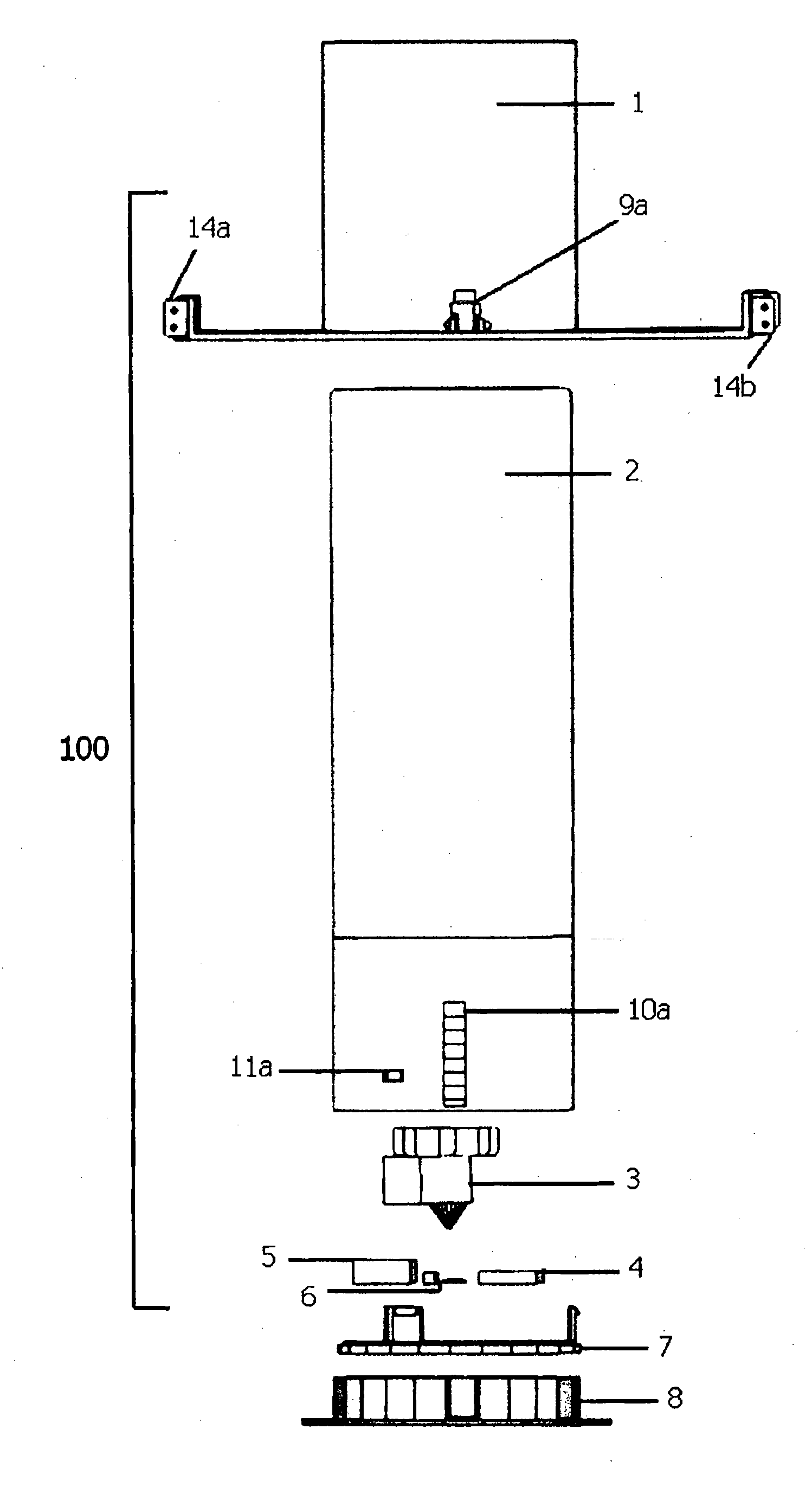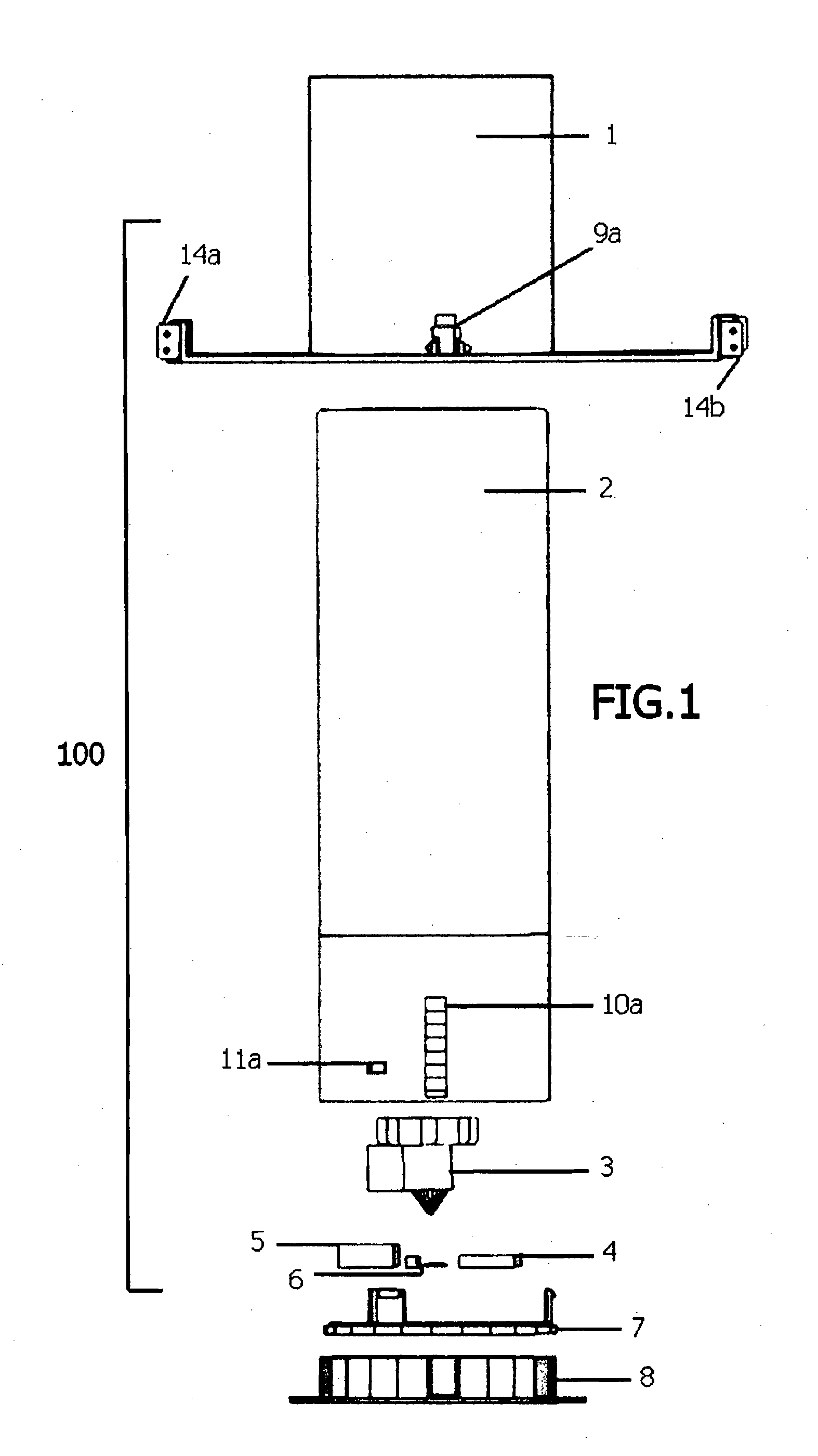Self-contained self-actuated modular fire suppression unit
a self-actuated, modular technology, applied in fire rescue and other directions, can solve the problems of many residential fire-related deaths, continue to pose a significant public health problem, and increase the cost of fire suppression, and achieve the effects of improving the design and installation method, and improving the safety of personnel
- Summary
- Abstract
- Description
- Claims
- Application Information
AI Technical Summary
Benefits of technology
Problems solved by technology
Method used
Image
Examples
Embodiment Construction
[0027]The present invention may take many forms and various embodiments will fall within the framework of the invention's scope. The following description, aided by the accompanying drawings, are provided to illustrate the present invention. While exemplary, the descriptions herein should not be construed as limiting in any way, other than to establish that the plain and ordinary meaning of the words of the appended claims are confirmed by the description and drawings.
[0028]FIG. 1 depicts an embodiment of an exploded front view of a self-contained self-actuated modular fire suppression unit 100. The fire suppression unit 100 includes a mounting bracket 1 including a cylindrical sleeve mated to a platform for securing the unit 100 to a ceiling structure. The unit 100 includes a pressurized tank 2 having a motorized nozzle 3, a battery unit 4, a circuit board 5, a fire detection unit 6, a tank cover 7, and a decorative flange 8. The bracket 1 is shown with telescoping bar hangers 14a,...
PUM
 Login to View More
Login to View More Abstract
Description
Claims
Application Information
 Login to View More
Login to View More - R&D
- Intellectual Property
- Life Sciences
- Materials
- Tech Scout
- Unparalleled Data Quality
- Higher Quality Content
- 60% Fewer Hallucinations
Browse by: Latest US Patents, China's latest patents, Technical Efficacy Thesaurus, Application Domain, Technology Topic, Popular Technical Reports.
© 2025 PatSnap. All rights reserved.Legal|Privacy policy|Modern Slavery Act Transparency Statement|Sitemap|About US| Contact US: help@patsnap.com



